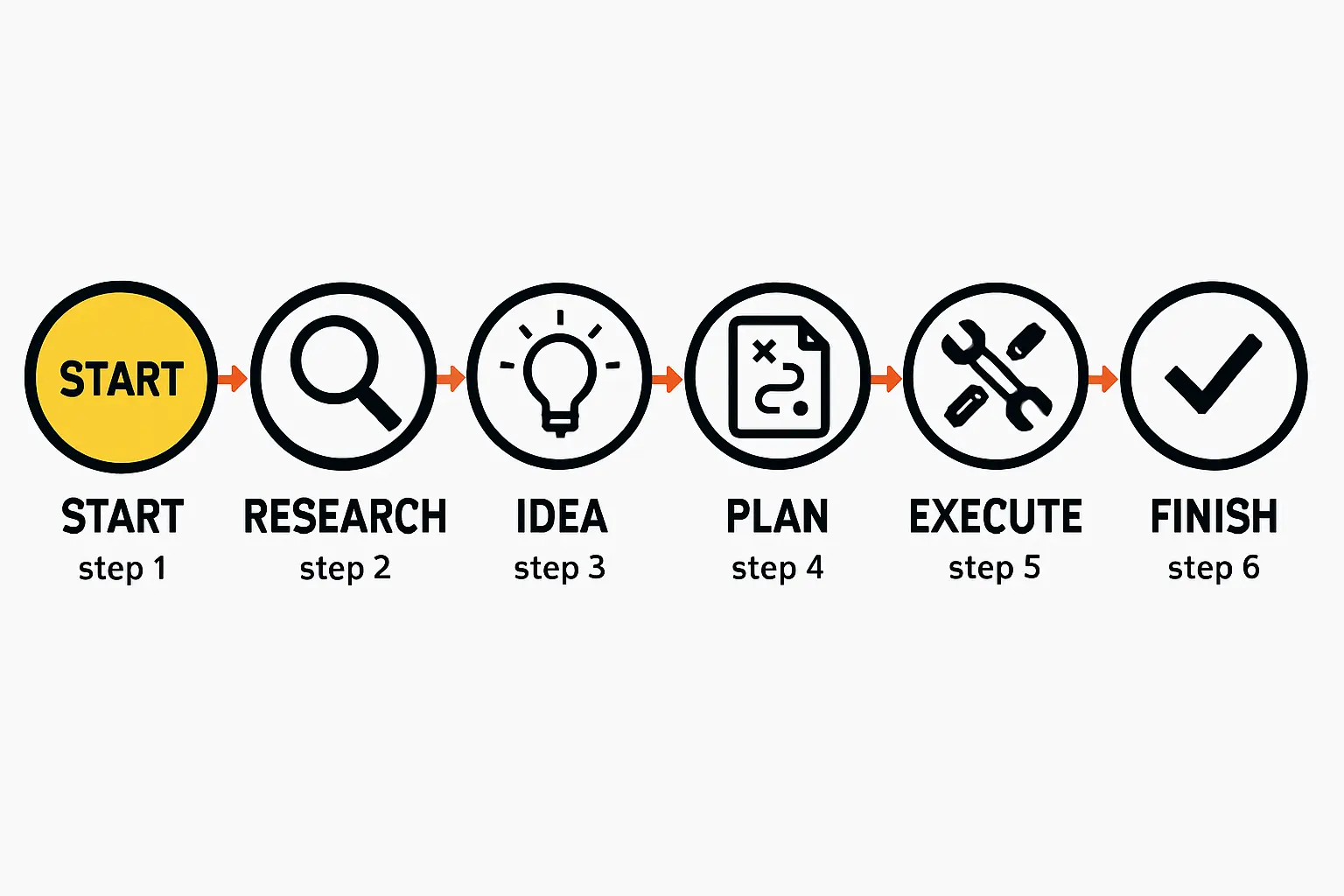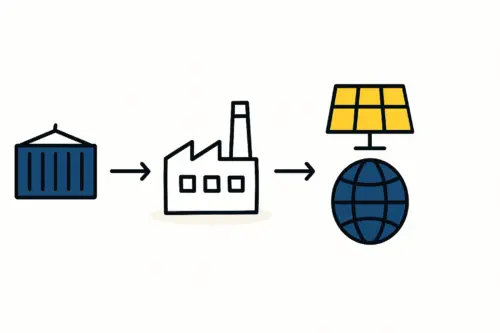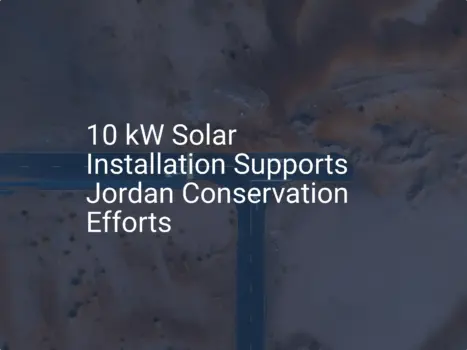Many entrepreneurs exploring the solar manufacturing sector are drawn to a region’s market potential or government incentives. Yet the most critical asset for any high-technology venture is often overlooked: human capital.
For an investor considering Jordan, the country’s skilled and educated workforce offers a significant, often underestimated strategic advantage. This is not a nation reliant on low-cost manual labor, but one that produces a steady stream of qualified engineers ready to be trained for the advanced manufacturing roles of tomorrow.
This article assesses the labor landscape in Jordan for a solar module production facility, exploring the local talent pool, typical salary structures, and the effective training methodologies required to build a world-class production team.
Understanding the Workforce Requirements of a Modern Solar Factory
A common misconception is that a solar panel factory requires a large contingent of assembly-line workers. While this may have been true in the industry’s early days, modern facilities are highly automated. The focus has shifted from manual dexterity to technical oversight.
A typical semi-automated production line requires a lean, skilled team responsible for operating, monitoring, and maintaining sophisticated machinery. Key roles generally include:
- Production Manager: Oversees all factory floor operations, scheduling, and output targets.
- Process Engineers (Mechanical & Electrical): Responsible for machine calibration, process optimization, and troubleshooting. They ensure the production line runs efficiently and to specification.
- Quality Control (QC) Manager & Technicians: Implement and manage quality assurance protocols at every stage, from incoming materials to final module testing.
- Machine Operators: Skilled personnel trained to operate specific equipment, such as stringers, laminators, and cell testers. Their role is to supervise the automated process and handle material logistics.
- Maintenance Staff: Technicians with electrical and mechanical expertise to perform preventative maintenance and repairs.
The primary challenge for an entrepreneur, therefore, is not finding hundreds of workers, but sourcing and developing a core team of 20 to 30 technically proficient individuals for a single production line.

Assessing Jordan’s Talent Pool: A University-Driven Advantage
Jordan’s true strength lies in its robust higher education system, which consistently produces a high volume of engineering graduates. Universities such as the Jordan University of Science and Technology (JUST), the University of Jordan, and Princess Sumaya University for Technology are well-regarded in the region for their strong engineering and applied science programs.
Jordan graduates thousands of engineers annually across relevant disciplines like mechanical, electrical, and industrial engineering. This creates a competitive environment and a deep talent pool for companies to draw from.
While these graduates possess strong theoretical knowledge, direct, hands-on experience with photovoltaic manufacturing equipment is rare. The critical opportunity, then, lies in harnessing this raw engineering talent and shaping it through targeted, specialized training programs. Their strong academic foundation makes them highly adaptable and quick to master the specific processes of solar module assembly.
Ready to make big Profits?
The solar Industry is Booming
WE HELP NEWCOMERS to the solar industry start their own solar module production line. Customers can make BIG PROFITS by selling modules and finding investors, without wasting money and time on things they don't need!

Salary Expectations for Technical Staff in Jordan
For any investor developing a solar module manufacturing business plan, understanding operational expenditures is paramount. Labor costs in Jordan are competitive, particularly given the high level of education. While figures fluctuate with experience and specific roles, the following offers a general framework for initial financial modeling.
Typical monthly salary ranges for key technical positions in the manufacturing sector are as follows:
- Junior Engineer (0-3 years of experience): JOD 500 – JOD 800
- Senior Engineer (5+ years of experience): JOD 1,000 – JOD 1,800
- Production / QC Manager (8+ years of experience): JOD 1,500 – JOD 2,500+
These figures represent a significant value proposition, allowing a new factory to build a highly qualified team without the prohibitive labor costs found in Europe or North America. This cost structure significantly improves the long-term financial viability of the operation.
Bridging the Gap: Effective Training Strategies for Your Workforce
The central challenge is bridging the gap between academic knowledge and the practical skills needed to operate a modern solar factory. A multi-stage training strategy is essential; experience from J.v.G. Technology turnkey projects shows that a structured approach yields the best results.
-
The ‘Train the Trainer’ Model
Before the main equipment arrives, the first step is to hire a core team of three to five key personnel, including the future production manager and lead engineers. This team can be sent abroad—often to the equipment manufacturer’s headquarters in Germany or China—for intensive, hands-on training. They learn the machinery inside and out, becoming the internal experts who will later train the rest of the local staff. -
On-Site Training During Commissioning
A crucial component of any turnkey solar production line contract is on-site training from the supplier’s engineers. During the installation and commissioning phase, the supplier’s experts work side-by-side with the local team. This is where the core machine operators learn the specifics of the solar panel manufacturing process, from loading materials to interpreting control panel data and performing basic maintenance. -
Developing Standard Operating Procedures (SOPs)
Once the core team is trained, their first major task is to develop and document clear, step-by-step SOPs for every process on the factory floor. These documents are invaluable for training new hires, ensuring consistency, and maintaining quality standards. They transform specialized knowledge into a replicable system—the hallmark of a professionally managed manufacturing operation.

Planning Your Human Resources: A Timeline and Budgetary Overview
Human resource planning should begin at least six to nine months before the factory is scheduled to become operational.
- 9 Months Out: Begin recruiting for the core management and engineering team.
- 6 Months Out: Send the core team for ‘Train the Trainer’ instruction.
- 3 Months Out: Recruit the remaining operators and technicians.
- 1-2 Months Out: Conduct on-site training during equipment commissioning.
Training should not be viewed as a mere expense but as a fundamental part of the initial investment required for a solar panel factory. Allocating an adequate budget for training ensures a faster ramp-up to full production capacity, higher initial product quality, and fewer costly operational errors.
Frequently Asked Questions (FAQ)
How many employees are needed for a small-scale (e.g., 50 MW) factory?
For a semi-automated 50 MW line running a single shift, a team of 25-35 employees is typical. This includes management, engineering, quality control, operations, and administrative staff.
Is it difficult to find English-speaking engineers in Jordan?
No. English is widely taught in the Jordanian university system, especially within engineering and technical faculties. Most engineering graduates are proficient in English at a professional level, which simplifies communication with international equipment suppliers and consultants.
What are the most critical roles to hire first?
The first hires should be the Production Manager and the lead Mechanical and Electrical Engineers. These individuals will form the technical backbone of your operation and are essential for overseeing the factory setup and the subsequent training of the wider team.
How long does a typical training program last for a machine operator?
A combination of classroom instruction and on-the-job training during the commissioning phase typically lasts four to six weeks. However, continuous skill development and process refinement are ongoing activities in any modern manufacturing plant.

Conclusion: Leveraging Jordanian Talent for Regional Success
Jordan offers a compelling, yet often overlooked, advantage for establishing a solar module manufacturing facility: a ready supply of educated, technically-minded engineers at a competitive cost. While these graduates require specialized, practical training, their strong academic backgrounds make them ideal candidates for the skilled roles in a modern, automated factory.
A structured training program—combining overseas instruction for core leaders with intensive on-site training for all operators—allows an investor to build a highly capable local team. This team is not just a cost factor but a strategic asset, enabling the production of high-quality solar modules to serve Jordan’s growing domestic needs and the wider MENA region. Proper planning and investment in human capital are the cornerstones of a successful and sustainable manufacturing venture.






